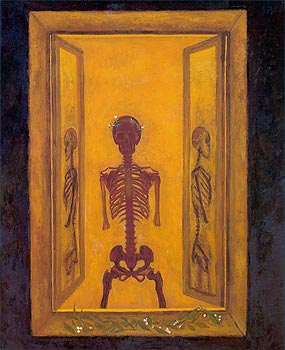Museo de Arte Contemporaneo de Monterrey,
Jan 01, 2000 - Jan 01, 2001
Monterrey, Nuevo León, Mexico
El poeta pintor
by LatinArt.com
Soriano wanted his sculpture to be seen as existing free in space, surrounded by air, and seen from all sides. In his essay for the catalogue, Edward Sullivan writes that Soriano’s interest in myth and legend are expressed through his sculpture. During the end of the 1930s and throughout the 1940s, Soriano rebelled against the social realism of the Mexican School, as did other artists such as Rufino Tamayo. His preoccupation for mythology, says Sullivan, was concretized during the years he spent in Italy from 1952, referring specifically to one of Soriano’s most famous sculptures from that period, Apolo y las musas (Apollo and the Muses), of which four large-scale versions were made. Soriano has continued creating sculpture even in recent years, such as Paloma (Dove) from 1992, still with the strength, energy, and grandeur of his earlier sculptures.
At the age of fifty-five, Soriano moved to Paris, where he still lives and commutes frequently to Mexico City. For a lifetime of artistic achievement, he was given the prestigious Premio Nacional de Arte by the Mexican government in 1987 as well as the Premio Jalisco de Arte (for his hometown state of Jalisco), and the same year named Gentleman of Arts and Letters by the French government. The Museum of Modern Art in Mexico City organized a retrospective exhibition in honor of his 70th birthday in 1990, and other successive retrospectives include Juan Soriano: 1937-1997 at the National Center of Art Reina Sofía in Madrid, Spain in 1997, and this current exhibition at the Museo de Arte Contemporáneo de Monterrey. Today, his works can be found in numerous private collections around the world, as well as in public collections that house his large-scale sculpture, such as museums, universities, commercial buildings, and other public spaces.
|









